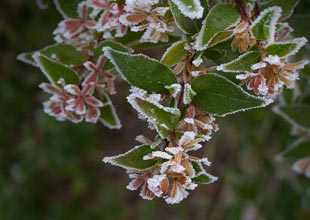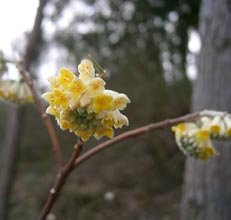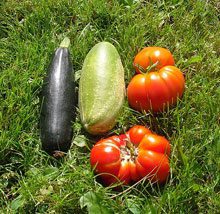 Winter is only one-third gone, and the past assures us that its most dramatic weather likely won’t hit us until February or March.
Winter is only one-third gone, and the past assures us that its most dramatic weather likely won’t hit us until February or March.
I remember a March ice storm some years back which did terrible damage – especially to a large banana tree which had made it through the winter still growing. That’s not to mention the fallen trees and broken limbs that always seem to accompany ice storms.
While the days are unmistakably getting longer, it is tempting to think winter’s bleak worst is behind us. It’s not, and gardeners would be wise to be alert to incoming cold fronts and arctic vortices, to be prepared for a hurried effort to protect particularly vulnerable new growth, and, afterward, to join the chorus of fellow gardeners who bemoan the challenges the weather brings.
Our winters in the Lowcountry are typically mild, compared to much of the country; but we invariably have periods of intense cold. This pattern presents our plants with confusing signals. For many, winter’s shortened days and cold temperatures signal the plant’s dormancy, a period of much needed rest and recuperation. When the days start lengthening and the temperatures stay moderate for a week or so, many plants feel like it’s a signal to break dormancy – to start sending out tender new growth, to break open the first flower buds, to celebrate spring’s arrival.
That’s when one of our February or March cold snaps sneaks in and zaps the precocious new growth. Cold reality, you might say, because the warm weather was only a teaser and spring is weeks away, still.
Although I suggested that the gardener should be prepared to rush out to perform protective measures when predictions for a freeze appear, I’ve found that for the most part such measures are of limited utility for me. I’ve thrown covers over camellias and hydrangeas in anticipation of a big freeze coming through, only to have ice build up on the covers sufficient to break the limbs below. And I’ve also learned of an impending ice storm while I was too far away to take any precautions, returning to frozen buds and broken shrubs. I have come to accept – perhaps not with perfect equanimity, but to accept – nature’s whimsy and the weather’s toll. Remarkably, the plants usually manage to get through the damaging weather, requiring a little extra care and cleaning up to look their best, but ready to face the limelight once spring does actually arrive.
 To be sure, there are many plants in our gardens in winter which shrug off the cold weather with hardly a shiver. Our wonderful paperwhite narcissus has been blooming its head off for a month or more. It’s fine with a freeze coming through. Edgeworthias, bare-stemmed all winter, but with their drooping clusters of white buds at the end of each branch, are fine through cold snaps, just waiting for the right moment in February or March to open those wonderfully fragrant flowers. Their cousin, the daphne, retains its foliage all winter, but it, too, is displaying dozens of buds ready to open at the right moment, scenting the garden even more. The old china rose, “Louis Phillipe,” has gotten through the winter’s freezes with even more lush green foliage than in earlier years; just a bit of pruning once new growth starts should bring on a show-stopping display of blooms which will repeat throughout the year.
To be sure, there are many plants in our gardens in winter which shrug off the cold weather with hardly a shiver. Our wonderful paperwhite narcissus has been blooming its head off for a month or more. It’s fine with a freeze coming through. Edgeworthias, bare-stemmed all winter, but with their drooping clusters of white buds at the end of each branch, are fine through cold snaps, just waiting for the right moment in February or March to open those wonderfully fragrant flowers. Their cousin, the daphne, retains its foliage all winter, but it, too, is displaying dozens of buds ready to open at the right moment, scenting the garden even more. The old china rose, “Louis Phillipe,” has gotten through the winter’s freezes with even more lush green foliage than in earlier years; just a bit of pruning once new growth starts should bring on a show-stopping display of blooms which will repeat throughout the year.
Yes, spring is just around the corner. But don’t be deluded into believing winter’s over yet. Celebrate the season’s unique offerings, keep one eye out for more terrible winter weather, and try to relax.







